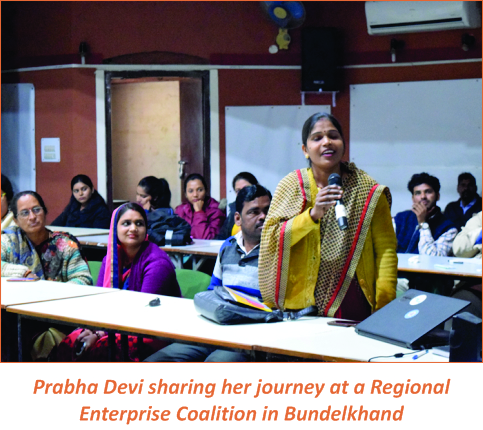Evolving Policy Landscape for
Entrepreneurship
Development in India
While
India has witnessed a rapid emergence in start-ups, there is little progress
to make the concept of entrepreneurship move beyond rounds of funding by
Private Equity/Venture Capital Firms, and high-technology buzzwords like
Artificial Intelligence and Virtual Reality to reach the grassroots. Can the
concept ever reach a middle-aged woman in rural Uttar Pradesh who missed her
formal education because her family did not think it was important enough?
In the past few years, the narrative of economic
growth of India is gradually shifting from ‘realising the demographic
dividend’ of the country by boosting the manufacturing sector to preserving
a just, equitable society which enables growth of local micro, small and
medium enterprises (MSMEs) to drive job creation. According to the World
Bank, SMEs represent about more than 50% of employment worldwide and formal
SMEs contribute up to 40% of national income (GDP) in emerging economies. In
India, the MSME sector contributes nearly 30% of India’s GDP and will be
crucial to help India reach the $5 trillion economy mark.

Even after multiple schemes and billions in investment, the rate of micro enterprise development in India continues to be inadequate and slow. The status report of the 2016 Start-up India scheme highlights the measures adopted to strengthen the entrepreneurship policy ecosystem such as streamlining paperwork requirements, legislative amendments, fiscal benefits and exploring labs to boost innovation through Atal Innovation Mission. However, like most schemes, it faces the difficulty to create visible transformations in the lives of those at the ‘bottom of the pyramid’.
Actors at the meso level (placed between the micro and macro level) have the potential to trigger systemic shifts in the structure of governance processes and embed innovative solutions across scales. Policy measures, especially around entrepreneurship, may have to be reimagined to ‘invert the pyramid’ and ensure that they are shaped by on-ground learnings. It will not be as simple as conducting baseline surveys before a pilot or roll-out of a scheme. Continuous dialogue at the grassroots level will help refine implementation of schemes and help the growth of such organisations to accelerate transformative change.
Platforms and entities operating at this level (e.g., regional or district) would have to leverage existing resources with state departments, government agencies and civil society organisations, to facilitate relational collaboration between the stakeholders to work towards a shared goal. Social innovation tools like that adopted by the Work 4 Progress (W4P) India programme can help imagine how meso level actors ‘bridge the gap’. Platforms like the Regional Enterprise Coalition, a multi-stakeholder learning and action platform for co-creating solutions, facilitated by Development Alternatives in NCR, Bundelkhand and Eastern UP, is one such example. It facilitates linkages between micro entrepreneurs and relevant macro schemes, innovative training programmes and affordable credit opportunities. It showcases the power of convergent action between local stakeholders and government departments by providing a neutral platform to discover synergies.
Policies and concerned institutions should try
to become cognizant of potential bureaucratic challenges which will be
encountered during implementation, address the disconnect with aspirations
of target communities and possess the agility to adapt at the macro level
through data. If policies can go beyond being ‘announcements required to be
implemented’, they can truly help overcome socio-economic barriers to
entrepreneurship and unleash a grassroots movement that powers India towards
equitable prosperity.
■
Reference:
-
The Economic Times: https://economictimes.indiatimes.com/small-biz/sme-sector/vision-is-to-increase-msmes-contribution-to-gdp-to-50-nitin-gadkari/ articleshow/69978436.cms?from=mdr
Saubhagya Raizada
sraizada@devalt.org